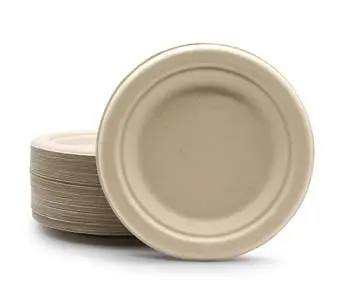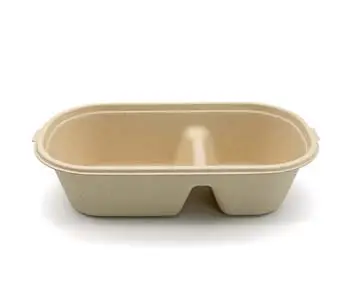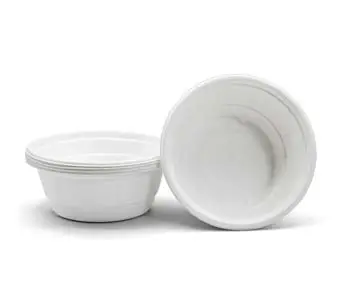Table of Content
[Hide]
As the world grapples with the ever-increasing challenges of environmental sustainability and waste reduction, finding viable alternatives to traditional non-biodegradable packaging has become an urgent necessity. Biodegradable take out boxes have emerged as a promising solution in this regard.
These innovative containers are designed to naturally decompose over time, leaving no harmful residues behind. In this article, we will explore the concept of biodegradable take out boxes, delve into the growing concern for environmental sustainability and waste reduction, and highlight the importance of finding alternatives that align with these concerns.
Definition of Biodegradable Take Out Boxes
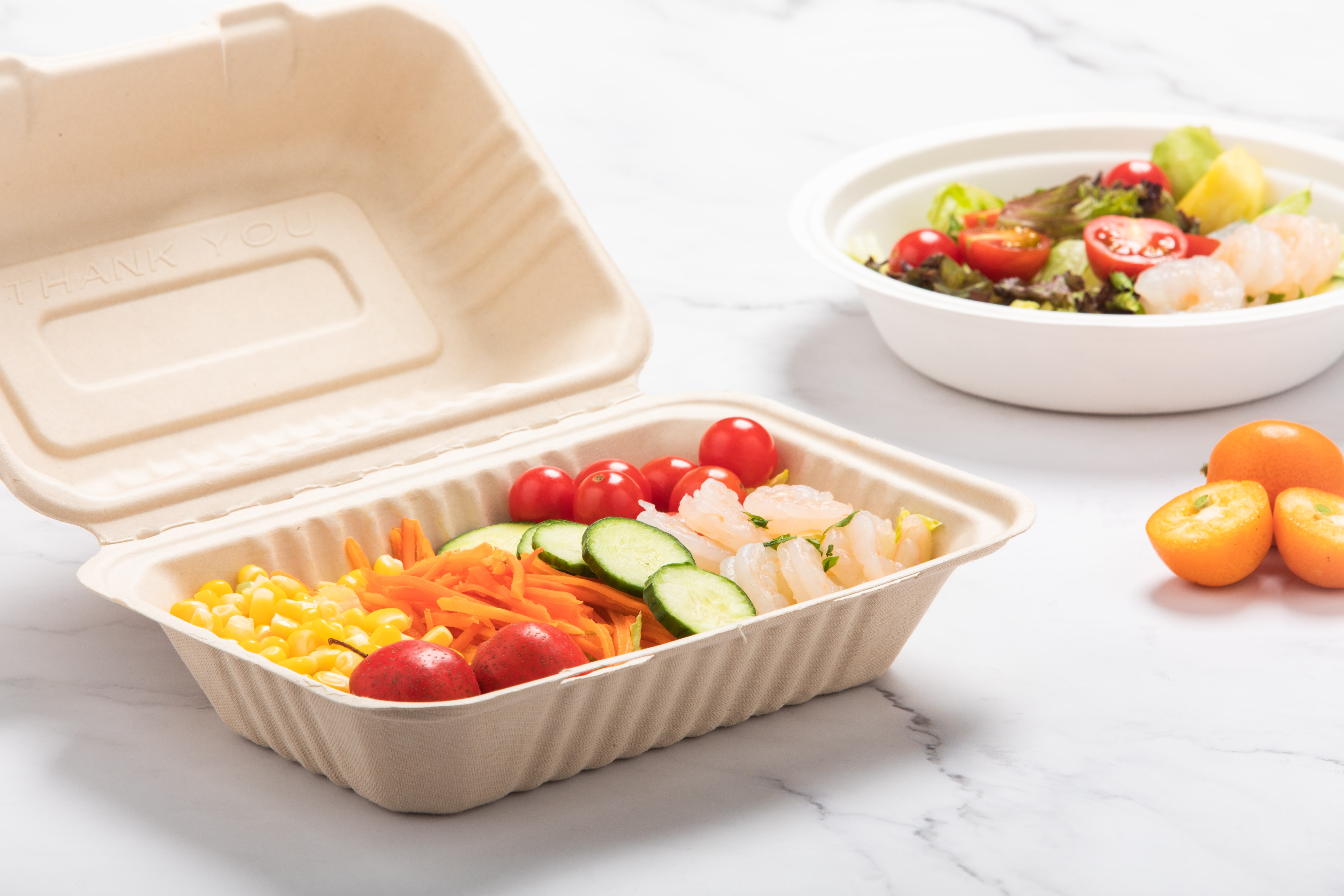
Biodegradable take out boxes are containers made from materials that have the ability to break down naturally and be assimilated into the environment without causing harm. Unlike traditional non-biodegradable packaging, which takes hundreds or even thousands of years to decompose, biodegradable options facilitate a quicker return to nature's cycle. These eco-friendly containers are typically manufactured using renewable resources such as plant-based materials (e.g., sugarcane bagasse or cornstarch) or innovative substances like fungal mycelium or algae-based compounds.
Growing Concern for Environmental Sustainability and Waste Reduction
The escalating concerns regarding environmental sustainability and waste reduction stem from a profound realization of the detrimental impact human activities have had on our planet. The excessive use of non-biodegradable packaging materials has led to mountains of waste in landfills and oceans, contributing significantly to pollution levels worldwide. This mounting crisis has awakened global consciousness about the urgency to adopt sustainable practices at all levels, including the food industry where take-out containers play a significant role.
Importance of Finding Alternatives to Traditional Non-biodegradable Packaging
The need for alternatives to traditional non-biodegradable packaging is paramount, considering the detrimental consequences associated with their production, usage, and disposal. Traditional containers made from non-renewable resources, such as petroleum-based plastics, contribute to the depletion of natural resources and increasing carbon emissions. Furthermore, their slow decomposition rate results in persistent waste accumulation and poses a threat to wildlife and ecosystems.
Overview of Biodegradable Materials
Biodegradability is a crucial concept in waste management that refers to the ability of a substance to naturally break down and decompose into harmless compounds over time. This characteristic holds great significance in the context of takeout Containers as it offers an eco-friendly alternative to non-biodegradable packaging, reducing the burden on landfills and minimizing environmental impact. In recent years, various types of biodegradable materials have emerged as viable options for take out boxes due to their capacity for decomposition and renewable sourcing.
Plant-based materials (e.g., sugarcane bagasse, cornstarch)
One commonly used category of biodegradable materials in take out box production is plant-based materials. Sugarcane bagasse, a byproduct obtained from extracting juice from sugarcane stalks, has gained popularity due to its abundance and sustainability. Biodegradable corn starch packaging is created by processing this fibrous residue into a pulp which is then molded into shape and dried.
Not only does this material possess excellent strength and durability, but it also provides effective insulation properties, keeping food fresh while maintaining desirable temperatures. Cornstarch is another plant-based material widely utilized in the production of biodegradable take-out boxes.
Derived from corn kernels through a process that involves separating starch from other components such as proteins and fiber, cornstarch offers both flexibility and sturdiness necessary for packaging purposes. Its biodegradability ensures that these containers can be easily disposed of without causing long-lasting harm to the environment.
Fungal mycelium-based materials
Fungal mycelium-based materials represent an innovative solution in the realm of biodegradable packaging. Mycelium refers to the root-like network structure that fungi create beneath the surface.
By harnessing this natural growth process, mycelium can be cultivated within molds or templates, forming lightweight and compostable materials suitable for take-out boxes. This sustainable alternative not only offers excellent insulation properties but also exhibits resilience and durability, making it a promising choice for environmentally conscious businesses seeking to minimize their ecological footprint.
Algae-based materials
Harnessing the potential of algae, an abundant aquatic organism, for biodegradable take-out box production is a relatively new avenue that holds immense promise. Algae-based materials are derived from the extraction of polysaccharides found in algae cell walls.
These polysaccharides can be processed into a moldable substance capable of forming sturdy containers. Beyond their biodegradability, these materials offer other compelling advantages such as natural antimicrobial properties and the ability to absorb excess moisture, ensuring food remains fresh and preventing sogginess.
Overall, these various types of biodegradable materials utilized in the production of take-out boxes showcase the remarkable diversity and ingenuity present within sustainable packaging solutions. As awareness regarding environmental issues continues to grow, embracing these alternatives becomes paramount in cultivating a greener future while still meeting our everyday needs.
Advantages of Biodegradable Take Out Boxes
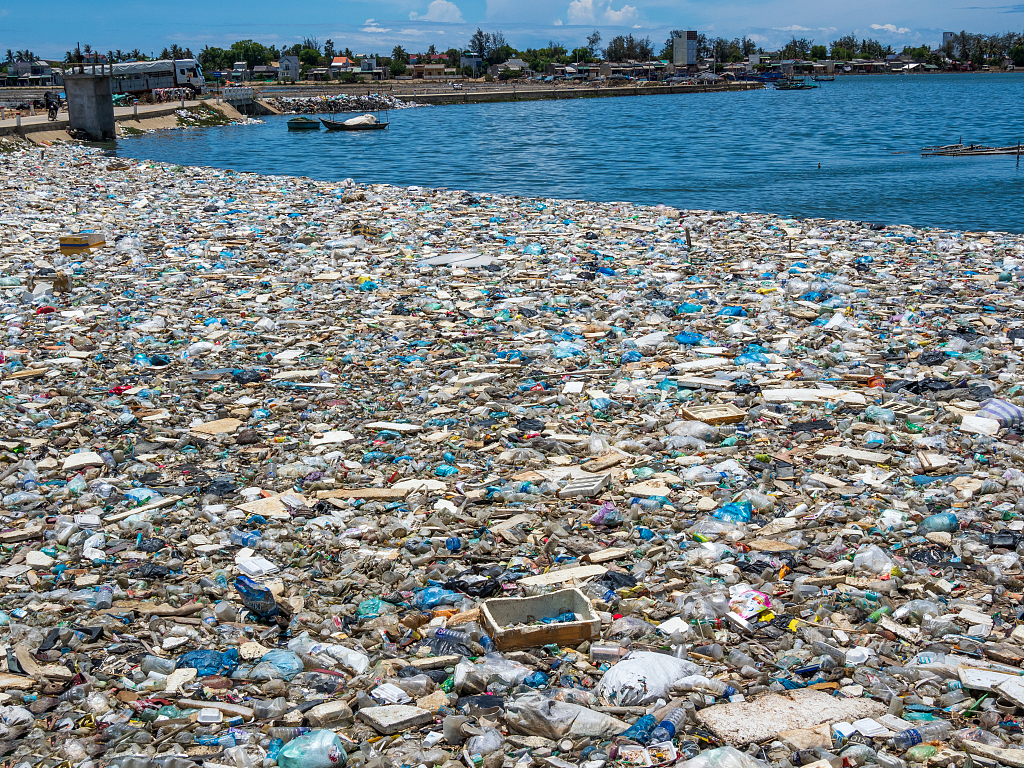
Reduced Environmental Impact
In the quest for environmental sustainability, biodegradable take out boxes emerge as a promising solution with numerous advantages. One significant advantage is their reduced carbon footprint during production compared to non-biodegradable alternatives. The manufacturing process of these boxes typically utilizes plant-based materials such as sugarcane bagasse or cornstarch, which require less energy and emit fewer greenhouse gases compared to the production of traditional plastics derived from fossil fuels.
By opting for biodegradable take-out boxes, businesses can actively contribute to lowering their overall environmental impact. Moreover, these eco-friendly boxes offer minimal contribution to landfill waste due to decomposition over time.
Unlike conventional plastic containers that persist in the environment for hundreds of years without breaking down, biodegradable take out boxes are designed to naturally decompose and return to the soil. This not only reduces waste accumulation in landfills but also minimizes the need for long-term waste management strategies.
As they break down into organic matter, they enrich the soil with nutrients and contribute to its overall health. This natural degradation process aligns with principles of circular economy and promotes a more sustainable approach towards waste management.
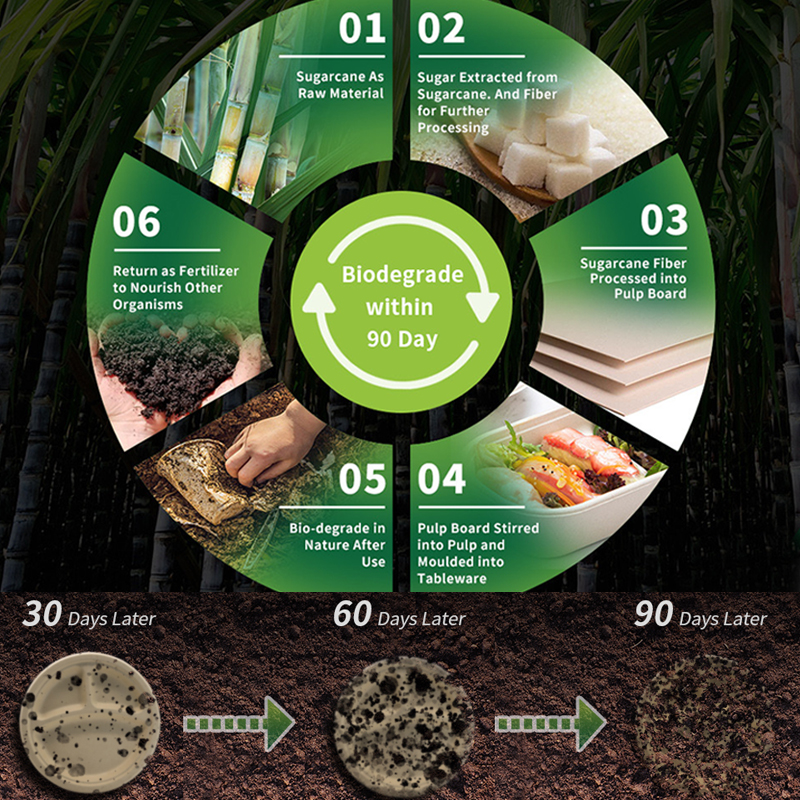
Health Benefits
Aside from their positive environmental impact, biodegradable take-out boxes also offer notable health benefits that make them an appealing choice for both businesses and consumers alike. One crucial aspect is the absence of harmful chemicals found in some non-biodegradable plastics.
Traditional plastics often contain additives like bisphenol A (BPA) and phthalates which have been linked to various health concerns including hormone disruption and potential carcinogenic effects. By opting for biodegradable alternatives, consumers can mitigate potential exposure to these harmful substances.
Furthermore, there is no risk of chemicals leaching into food when using biodegradable take-out boxes, ensuring consumer safety. Plastic containers, especially those subjected to high temperatures or acidic foods, can release chemicals that may contaminate the food they come into contact with.
Biodegradable options, on the other hand, are made from materials that do not pose a risk of chemical leaching. This guarantees that the food remains free from any potential contaminants and provides consumers with peace of mind regarding their health and well-being.
Biodegradable take-out boxes offer significant advantages compared to non-biodegradable alternatives. They contribute to reduced environmental impact by decreasing carbon emissions during production and minimizing landfill waste through natural decomposition over time.
Additionally, these eco-friendly boxes provide health benefits by eliminating harmful chemicals found in some non-biodegradable plastics and ensuring no risk of chemical leaching into food. By embracing biodegradable packaging solutions, businesses can demonstrate their commitment to sustainability while promoting consumer safety and well-being.
Challenges and Limitations
Cost Considerations: Higher Production Costs Compared to Traditional Packaging Options
Biodegradable take-out boxes, although invaluable for their environmental benefits, often come with higher production costs compared to their non-biodegradable counterparts. The manufacturing process for biodegradable materials involves sourcing sustainable resources, refining them into usable forms, and ensuring adherence to strict environmental regulations. These factors contribute to increased expenses throughout the supply chain.
As a result, businesses may face the challenge of deciding whether to absorb these higher costs or pass them onto consumers by adjusting pricing. Balancing the desire for sustainability with affordability remains a significant obstacle for both businesses and consumers.
Cost Considerations: Potential Impact on Pricing for Consumers and Businesses
The increased production costs associated with biodegradable take-out boxes have the potential to impact pricing in the food industry. Since packaging costs represent a significant portion of overall expenses for restaurants and food establishments, transitioning to biodegradable options can influence menu prices. This may cause some concern among consumers who might hesitate to pay slightly higher prices for eco-friendly packaging.
Additionally, small businesses may face financial constraints when attempting to incorporate biodegradable materials into their operations due to limited profit margins. Striking a balance between sustainability goals and managing cost implications is therefore crucial in fostering widespread adoption of biodegradable take out boxes.
Technical Limitations: Limited Availability and Variety of Biodegradable Materials for Certain Food Types (e.g., Hot Liquids)
While biodegradable take-out boxes have made remarkable advancements, there are still limitations in terms of material availability and suitability for specific food types. For instance, some biodegradable materials may not be suitable for containing hot liquids due to their heat-sensitive properties or insufficient insulation capabilities.
This poses challenges when it comes to packaging hot soups or beverages sustainably without compromising functionality or safety. The development and commercialization of new biodegradable materials that overcome these limitations are essential to meet the diverse needs of the food industry.
Technical Limitations: Challenges with Heat Resistance and Durability in Some Cases
Ensuring that biodegradable take-out boxes maintain their structural integrity and functionality throughout the entire meal journey remains a technical challenge. Some biodegradable materials may have limitations when it comes to heat resistance, which can result in deformations or leaks when exposed to high temperatures. Additionally, durability concerns arise when packaging heavier or greasier food items, as the containers must withstand potential weight and moisture stress without compromising performance.
Technological advancements are needed to enhance heat resistance, durability, and overall robustness of biodegradable packaging options to meet demanding industry requirements while upholding sustainability goals. The challenges and limitations outlined here shed light on the intricacies involved in transitioning from traditional non-biodegradable packaging options to eco-friendly alternatives like biodegradable take-out boxes.
While cost considerations pose hurdles for businesses and consumers alike, technical limitations highlight the need for ongoing research and innovation in material science. Overcoming these challenges will pave the way toward a more sustainable future where our dining experiences can harmonize with environmental consciousness.
Subtopics on Biodegradable Take Out Boxes
Sugarcane Bagasse-Based Take-Out Boxes
Sugarcane bagasse is a residue left over from the sugarcane milling process. It is an excellent raw material for manufacturing Bagasse based food packaging due to its fibrous nature.
The manufacturing process involves collecting bagasse, which would otherwise be discarded as waste, and processing it into a pulp. This pulp is then molded into various shapes using high heat and pressure.
The advantages of using sugarcane bagasse-based take out boxes are numerous. Firstly, they provide excellent insulation properties, keeping food hot for longer periods.
This insulation helps to maintain the quality of the food and prevents heat transfer to the consumer's hands. Additionally, sugarcane bagasse-based boxes are sturdy and resistant to grease and moisture, ensuring that the packaging remains intact throughout transportation.
Conclusion: A Sustainable Future
Biodegradable take-out boxes made from materials like sugarcane bagasse offer a sustainable solution in our quest for environmental stewardship. By utilizing discarded agricultural byproducts like sugarcane bagasse, we can reduce waste and divert valuable resources away from landfills.
These innovative packaging options not only contribute to waste reduction but also provide excellent insulation properties as well as resistance against grease and moisture. Embracing biodegradable take out boxes is not just a shift towards better packaging practices; it signifies our commitment towards building a more sustainable future.
By opting for these eco-friendly alternatives, both consumers and businesses have the power to make a positive impact on our environment. Together, we can create a world where convenience does not come at the cost of environmental degradation – one meal at a time!
References


